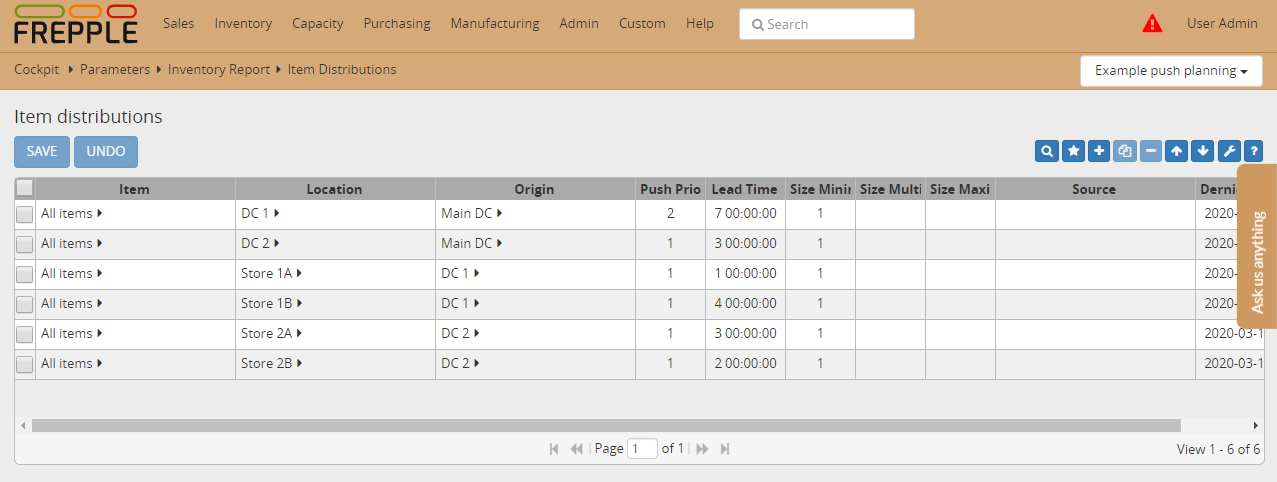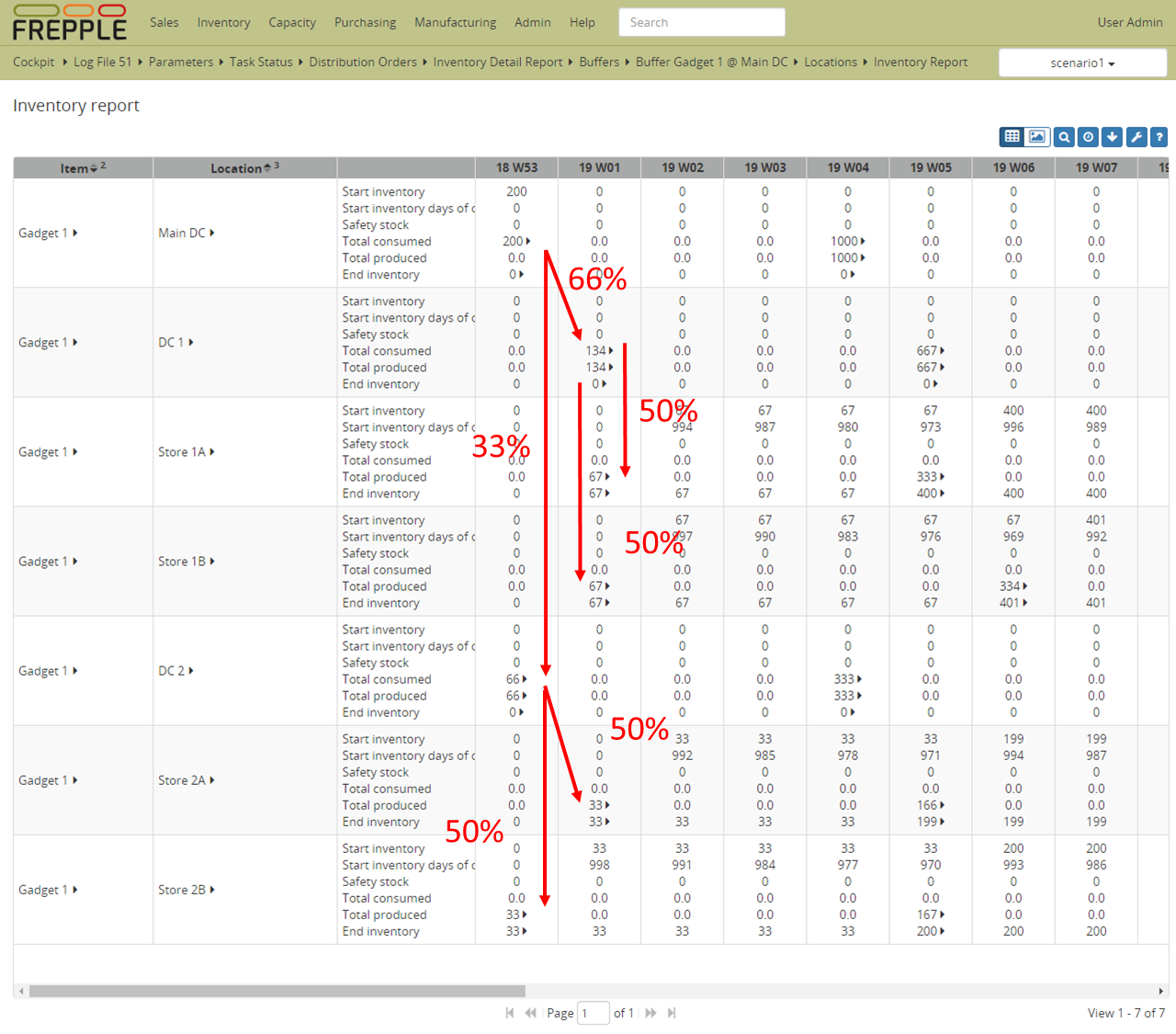Push planning
In retail distribution supply chains it is pretty common to have occasional supply available that needs to be pushed in the stores, even in the absence of any forecast demand. Typical examples are 1) a special seasonal promotion gadget to be distributed across the stores, or 2) a container with a one-of special item has arrived and its content needs to be put on display in the shops as soon as possible.
The traditional approach of planning forecasted demand across the supply chain doesn’t apply for this specific items. No reliable forecast can be generated for the items, and we just want to distribute the available supply in the network.
Check this feature on a live example
Download an Excel spreadsheet with the data for this example
In this example we explain the configuration and demonstrate with an example.
The activate the push planning mode in frePPLe you need the following configuration:
- The parameter “plan.solver” needs to be set to ‘distribution’.
- The field “push priority” on the item distributions needs to be populated with the proportional weight of each possible destination where excess supply is pushed towards.

- The “push mode” flag needs to be set to ‘true’ in the inventory policy for all applicable item+location combinations.This can be edited directly in the inventory policies table or through a business rule

- This example where inventory is pushed two levels down the network:First, the inventory and a confirmed purchase order are pushed from the “main DC” to “DC 1” (66%) and “DC 2” (33%).The supply arriving in “DC 1” is immediately distributed equally across stores “1A” and “1B”.The supply arriving in “DC 2” is immediately distributed equally across stores “2A” and “2B”.The inventory report is a convenient place to get an overview of the results. In the screenshot below you can see how both the inventory of 200 pieces in the main distribution centre and a confirmed purchase order of 1000 pieces are all ending up on the shelves in the stores.Notice the absence of any sales order or forecast in this example.

